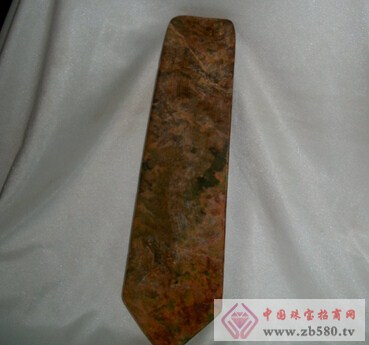During the Yin and Shang Dynasties, in the vicinity of the Central Plains area ruled by the Shang Dynasty, there was also the "Fangguo" of the Huyi side. Many of the ruins or cemeteries in Fangguo have also unearthed a considerable number of jade wares in the Shang Dynasty. Among them, the largest number of unearthed jade wares and the most unique styling patterns are the most popular in the ancient plains of Chengdu. In 1986, the Guanghan Sanxingdui No.1 and No.2 Sacrifice Pit, as well as the Chengdu Jinsha Site excavated in 2001, excavated more than 600 pieces of jade and more than 2,000 pieces, which are the two most concentrated harvests of the ancient jade culture jade.

Unlike the burial methods of the tombs in the Central Plains area, the jade wares of the ancient ancestors were either from the ritual pits or concentrated in religious places (the possibility of discovering the tombs of nobles with many jade burials in the future). At the same time, the jade's material, shape and even the craftsmanship are quite different from those of the Central Plains. The common geometrical rituals (ç®, ç’§, gingiva, side ç’‹, etc.) and the ceremonial "Jade Bing" (Ge) Tools (axes, hoes, chisels, pounds, knives, etc.), rare decorative jade articles, basically do not see the silhouette-like animal-shaped jade carvings widely popular in the Central Plains.
The ancient jade culture jade is the most numerous and most striking, and it is also a kind of jade with various shapes. In the jade, there are a small number of sides that are nearly narrow and long parallelograms, and the shape is huge. One of them depicts the scene of the mountain side and the three-person pipa, with unquestionable images confirming the ritual attributes of the gong. There are more gingiva, two types of shape, the front end is deep V-shaped and Go-shaped three categories. A Go-shaped gum was unearthed from Sanxingdui. The top of the body was carved with a bird, and the body was engraved with a cross-shaped pattern on both sides. The two-piece "open-mouthed dragon-shaped" fangs show the signs of the influence of the Erlitou culture "Dragon's Tooth".
As a ritual device, in the late Shang Dynasty, it was almost disappeared in the Yin Shang Dynasty of the Central Plains, but it was especially popular in the Chengdu Plain thousands of miles away. It not only became an important medium for the ancient ancestral worship of the mountains and rivers, but also the gods and ancestors. The development has spawned many variants, such as the Go-shaped gums and the "mini"-type small dragonflies with a length of about 5 cm, which are all "specialties" that are not found in other areas.
Along with the jade unearthed, there are a lot of fine cultural relics such as gold, bronze and ivory. Among them, the exaggerated quirky bronze bulging gods, the beautiful bird fish gold rods and the sun god bird gold foil, not only proves that "the silkworms and the fish carp, the founding of the country" (Li Bai "蜀é“éš¾") The two kings of the silkworms and the surimi are not illusory, and together with the jade, they form the most solemn and most sincere sacrifice combination of the ancient kingdom, and the social and cultural ambiguity that is quite different from the Yin Shang Dynasty of the Central Plains.
SUZHOU WINTEX TEXTILE CO.,LTD. , https://www.szwintextextile.com